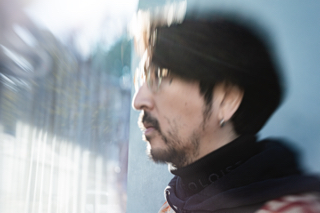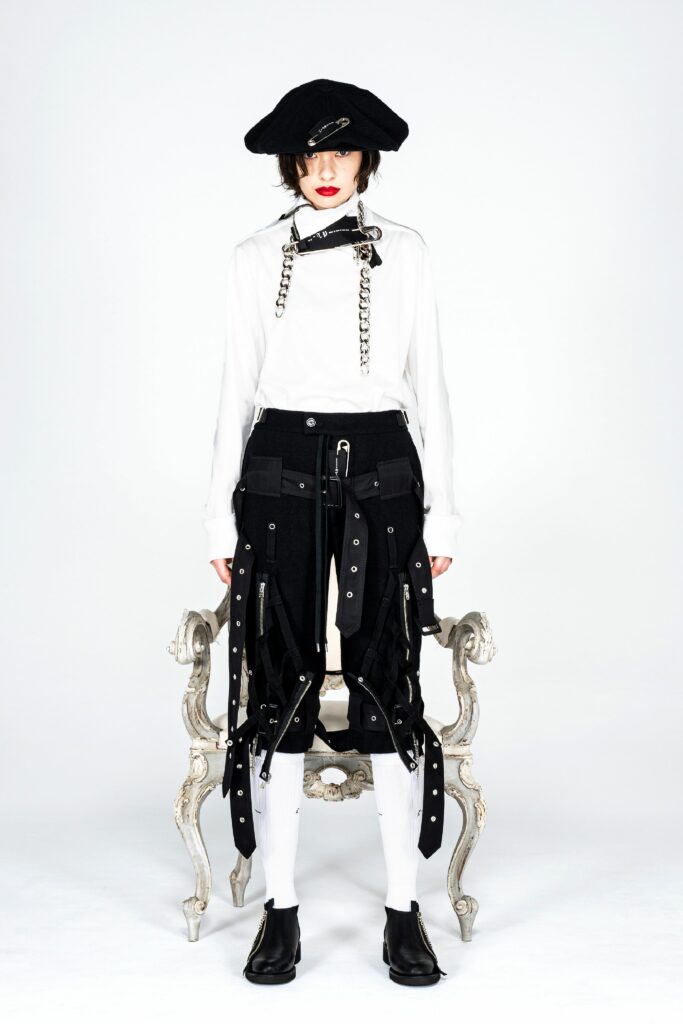The Fashion Life of Takahiro Miyashita

Born in Tokyo in 1973, Takahiro Miyashita founded his first brand called NUMBER (N)INE when he was 23. At the height of his success in 2009, he announced the end of NUMBER (N)INE, shutting down operations following the Autumn-Winter collection 2009-10. The following year, he started the TAKAHIROMIYASHITATheSoloist. His first collection was presented for the upcoming winter season of 2010. Instead of using the runway format, he showed his designs as an installation. ”TheSoloist” means one that desires to be a soloist, who has concern for fashion and keeps an aloof spirit. Someone, in his case, who has indomitable resolve. In January 2018, he was among the headlining designers at the 93rd edition of Pitti Immagine Uomo in Florence, with a memorable Autumn-Winter 2018-19 collection, presenting his show back-to-back with Jun Takahashi of UNDERCOVER.
What does sustainability mean to you?
I started TheSoloist in 2010, and even back then, I already had what you would call a sustainable approach to the brand, creating pieces that would endure for years to come. The start of the brand was the result of a long reflection on how to approach garments differently and what would be the garments of the future. And I felt, at that time, sustainability was an important matter to move into. What I’m about to share with you might be controversial, but today the term ‘sustainability’ has started to feel like brakes being applied to creativity. Sustainability doesn’t have (shouldn’t mean) to mean making boring clothing or stopping the creative process, it should feel like an evolution, and that’s what I’ve been doing and I feel I have I to push even harder on the accelerator to move things forward.
Why does sustainability matter to you?
It matters to me because it should be a part of continuing to create, exploring how I can make things evolve — the theory of clothing, design, and the arts. Sustainability should be obvious, and maybe I say that because it’s ingrained in the process of the TheSoloist. Since the beginning, I was avoiding the use of any chemical and subsidiary materials, such as interfacing, for example. I would use fabrics that did not require ironing, I would make buttons with natural materials like nuts, dying them one by one without using any chemical ink. At the factory I would collect all the remnants of wool lying on the floor from the knits we made, and with this we made threads and they were used to make scarves. I’m used to recycling any leftover parts, even leather. Although I’m not using leather as much these days, I always utilized every single piece to avoid any waste. I’m not an eco-leader, but since the beginning, I’ve been recycling, remaking, rebuilding, upcycling — basically avoiding any waste of resources. Sustainability matters because it’s a way to fix climate change; and everyone should have noticed and realized the importance of this earlier.
Why do you think we are only giving more attention to sustainability now?
People are giving attention to it now because fashion has been called out for being one of the seven most polluting industries on this planet. For me, though, I’ve been creating with a sustainable approach in mind for 11 years.
How has your approach to sustainability evolved in the past year?
It hasn’t really changed because it has been there since the start when I created the brand.I think it’s better to think how to evolve fashion rather than look back on the past. I prefer to move forward.
How do you remain engaged or environmentally aware in your personal life?
My life is fashion… Maybe.
How can we produce more responsibly?
Everyone is not doing it? Designers should be free to express their creativity but we should be thoughtful about how we produce. Like I’ve just said, no waste, craftsmanship over mass, and being seasonless.
How can we consume more responsibly?
While there is no rule that should be applied to everyone, I do think that people should value craftsmanship.



How might sustainable materials and fabrics influence or direct future fashion design?
I don’t think it’s about making a choice between one or the other; it should be about these fabrics and materials sitting in harmony with the materials in use now. Let’s take the leather industry, for example: the tanners, the leather artisans… I do not think we have to stop making leather shoes or leather jackets. It is the variety of designers that is interesting: some using fur and leather, others paying attention to recycling. I just think that everyone needs to be more thoughtful on how they approach things. People should be free to use leather or fur if they want to; no one is forced to be vegan. I respect vegan people, I respect the ecologist, I understand their beliefs. I just don’t feel everyone should be forced into one way.
Does ‘sustainable fashion’ have an aesthetic and is this changing?
I struggle to see aesthetics and sustainability in the same sentence. I would just say, don’t remove the beauty from fashion.
In what ways have you seen the industry already improving?
When I see that everyone is jumping on the sustainability train going in the same direction, I actually do not feel that the fashion industry is improving. I feel this is another one of fashion’s problems today: everyone just doing the same thing. I prefer to go the opposite way, because for me, there is no meaning and no improvement to go that way. Let’s not lose our freedom. Last season in my collection, my message was: bye bye dystopia! The world is beautiful and worth fighting for. This season: “The beginning is the end and the end is the beginning.”For me, the beginning of something could be the end of something, and when something ends, I like to believe something new begins.All together let’s make fashion evolve consciously.
In what ways could the industry be doing better?
I think the industry should be encouraging fashion to be more free, but with a concern for our world. I think it’s proper for fashion to seek freedom in a restrictive situation. If everyone is looking in the same direction, there would be no point of view; nothing new will come out. Creativity will disappear, and without creativity, humans will disappear.
Who are your sustainability role models?
I don’t have any sustainability role models. Maybe me from 11 years ago…
What is one change in practice that you are proud to share?
It’s normal to be disappointed with the current situation, but just being sad doesn’t make tomorrow. In today’s era of easy online shopping, I like to imagine that some people, just looking at photos of collections, without going to the store to try the clothes on, would spend millions or tens of millions of Yen. For that, I have to make very beautiful garments that look amazing, that would make people buy on the internet, without any hesitation, in one click. This idea had a positive change on me, and made me aware that creativity should continue whatever the situation. Even in these difficult times of the pandemic. We can’t just passively observe the current situation. I know that we have to accept the reality, but I’m trying not to focus on it to move forward.
What is one change in practice that you would like to make?
It’s not one change and practice; it’s a series of changes always evolving. I have to keep pushing to approach this goal!
What is one change all of us could be doing right now?
Because of the times, I would like to say, “Do not prevent fashion from evolving!” Especially since the opportunity finally came for a creator like me to be able to present on the women’s calendar, a collection that is, regardless of gender, wearable by anyone.
What gives you hope right now?
I can feel that tomorrow is coming. Today was crazy, crazy; tomorrow will be coming again. But, it gives me hope that I could think that tomorrow will come for sure. There are some musicians who can’t play piano, others who do not want to play guitar… It is from the diversity that the creativity arises. I may feel I will live for a long time even if this is not something that I’m aiming for…



